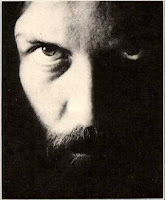> This list will feature some films that were originally released in 2007.
This list will feature some films that were originally released in 2007.
Explanation: This is Sweden, the Northern hemisphere of everything cold and damp, and we’re still a bit behind. For example, Tropa de Elite premiered in Rio De Janeiro in August 2007 and reached Sweden one year later. No wonder those who take serious interest in movies and want to take part in the worldwide discussions on internet forums and elsewhere resort to illegal downloading…
There are two Swedish films I haven’t seen yet, De ofrivilliga (Involuntary) och Låt den rätte komma in (Let the Right One In). I think Gitarrmongot (The Guitar Mongoloid), Ruben Östlund’s first full-lenght feature, is one of the best Swedish films ever (one day I’ll write about Swedish films exclusively), and I love John Ajvide Lindqvist’s debut book and have heard only good things about the movie, so I’m sure both films would have been featured on this list if I’d seen them.
As for The Dark Knight, well, it’s an ok movie. Very overrated, though. Heath Ledger (R.I.P.) was amazing as The Joker, but that alone doesn’t make a good movie. And yes, I enjoyed the total mindlessness of Rambo a lot!
As for the amount of worthless or just anonymous movies I’ve watched thoughout the year… Well, I’ll spare you the hate and leave you happy not knowing what junk there is out there (Tropic Thunder and its’ fans, please fuck forever off…).
Me and a friend ran the Östasiatiska Museets Filmklubb for several years, showing movies from the Far East (China, Korea and Japan), but also from India and Southeast Asia. Since the downfall of that club I got sort of tired of those kind of movies and haven’t really been updated there. The Warlords reminded me of how mesmerizing Asian movies can be when that very special Asian humour is left out. The scenery is fantastic (so many bodies…), like an epic war poem, or a painting brought to life. As always, the fight scenes are superior to everything Hollywood has ever accomplished. And Jet Li looks old, which is cool.
Speaking of Asian movies, I still haven’t seen Lust, Caution. I’ve heard some good words about the sex scenes in that one.
If you had to chose only one or two (ok, three then) films from the list below, I suggest There Will Be Blood, Into The Wild and Eden Lake. Here’s why:
Eden Lake made my pulse rise, it made me cringe in my seat. Very few horror movies have that effect on me nowadays. The psychological horror is mixed with blood and comes full circle: it’s scary. And let’s face it, children are as evil as adults. There’s no escaping the human madness.
Into The Wild made me cry, think about my family and planted thoughts of relevance in my mind. I wrote about that in a previous post entitled Into The Wild and the ego. It’s got an amazing soundtrack as well. Very good lyrics and music on that one.
There Will Be Blood… wow! It’s about life, misanthropy, belief, cause and effect. It’s subtle, but still epic. Last year I was blown away by No Country for Old Men. This year it’s There Will Be Blood. Both of these films have a faint relationship to the Southern Gothic genre. Guess I enjoy disturbing characters who say cool stuff like There are times when I look at people and I see nothing worth liking and I… drink…your…milkshake.
However, all ten films are well worth watching.

[REC] (avoid the American remake! Watch the Spanish original.)
Last year’s list for the statistically impaired.


















